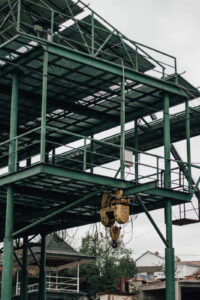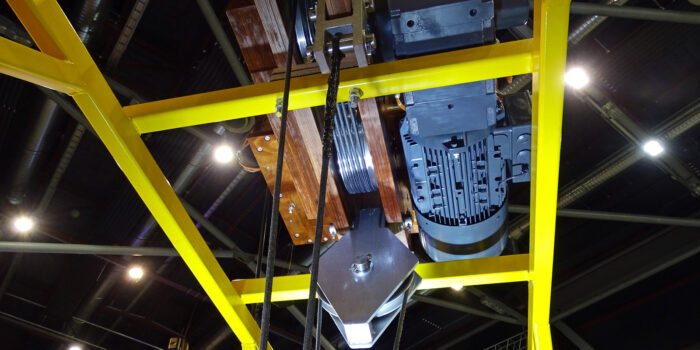All equipment is subject to damage and wear, in order to extend the life of hoists and winches it is important to maintain them regularly.
What is a winch?
The winch allows objects to be moved horizontally and vertically. It can also be used to pull ropes or wires. Winches are used, among others, in the construction, energy, railway and automotive industries.
What is a hoist?
As opposed to winches, hoists only allow loads to be transported vertically by means of a chain or rope. Hoists are mainly used in the construction industry.
Maintenance and service of hoists, winches
The maintenance of hoists and winches is regulated by the Decree of the Minister of Entrepreneurship and Technology of 30 October 2018 on technical supervision conditions for the operation, repair and modernisation of material handling equipment.
There are cases where the operating and maintenance instructions for the hoist or winch contain details of what maintenance work must be carried out on the equipment. It also sets deadlines separate to the above regulation for carrying them out.
Inspection and maintenance records for equipment
Each inspection or maintenance carried out should be recorded in the equipment's maintenance log. Such a logbook should be kept by its user. Each piece of equipment may have its own separate maintenance log.
In addition, a protocol is drawn up after each inspection. This shall include, inter alia:
- Duration of the review
- Number of staff carrying out the review
- Result of the review
- Notes on the condition of the equipment
- Recommendations for additional work
What is done during maintenance
During the maintenance of the equipment, min:
- Technical condition of brake systems
- Operation of safety components
- Running track
- Fire protection installation
Also made min:
- Screw tightening
- Brake adjustment
- Lubrication
If an abnormality is detected during the course of the inspection that may contribute to taking the equipment out of service, we should be informed immediately.
Technical Inspection Authority supervision
 Hoists and winches are classified as handling equipment. They are therefore subject to supervision by the Technical Inspection Authority. Detailed conditions for supervision are regulated by separate rules and regulations. According to these, simplified technical supervision applies to handling equipment with a maximum load capacity of up to 250 kg. This excludes equipment used for the transport of persons. Also subject to simplified supervision are hoists and winches, which have a manual drive for all mechanisms and their lifting capacity does not exceed 2000kg. The above-mentioned equipment does not have to be notified to the OTI. However, it is worth remembering to ensure their proper maintenance by employing people with the relevant qualifications.
Hoists and winches are classified as handling equipment. They are therefore subject to supervision by the Technical Inspection Authority. Detailed conditions for supervision are regulated by separate rules and regulations. According to these, simplified technical supervision applies to handling equipment with a maximum load capacity of up to 250 kg. This excludes equipment used for the transport of persons. Also subject to simplified supervision are hoists and winches, which have a manual drive for all mechanisms and their lifting capacity does not exceed 2000kg. The above-mentioned equipment does not have to be notified to the OTI. However, it is worth remembering to ensure their proper maintenance by employing people with the relevant qualifications.
Unplanned maintenance work
Considering older equipment, its maintenance activities should contribute to reducing the number of breakdowns or faults. Maintenance of newer equipment should serve to keep the equipment running and extend its life. Maintenance is a good way to minimise the risk of faults or failures.
The occurrence of a breakdown or fault is determined by various factors. These do not necessarily have to be related to the technical condition of the equipment. These include
- Age of equipment
- Age of components
- Operator quality
- Specific working conditions
- Condition of coexisting installations


